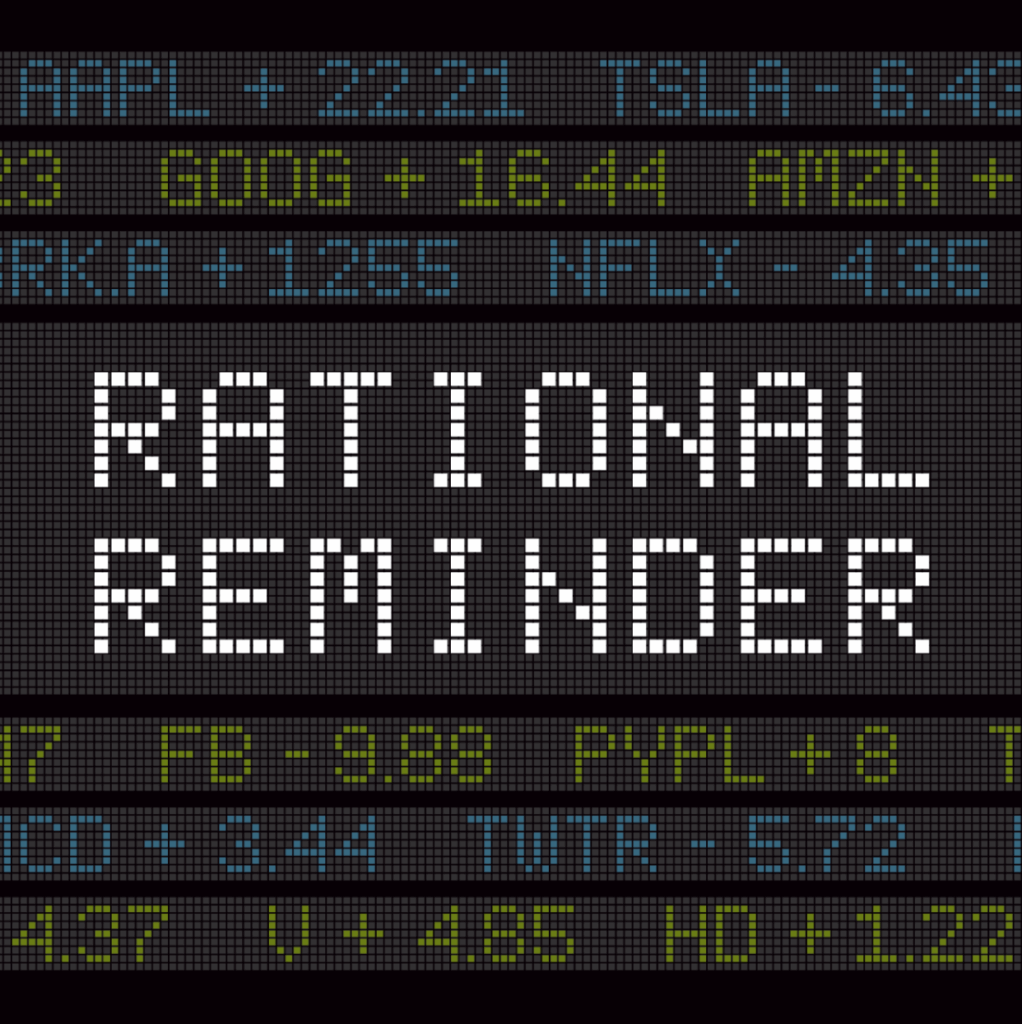Details Are Part of Our Difference
David Booth on How to Choose an Advisor
20 Years. 20 Lessons. Still Taking the Long View.
Making the Short List: Citywire Highlights Our Research-Driven Approach
The Tax Law Changed. Our Approach Hasn’t.
Category: Planning
The Power of a Family Mission Statement

Our clients know we support them and their families in meaningful ways. This includes articulating long-term investment plans, helping refine estate strategies, and thinking creatively about charitable giving.
While mission statements are common in businesses and nonprofits, they’re far less common in family life. Yet as families become more complex, people live longer, and communication becomes more open, many are taking the long view and creating multi-generational plans that reflect not just what they want to happen with their wealth, but why. A family mission statement can bring clarity, connection, and shared purpose, often helping to avoid conflict now and in the future.
A recent Wall Street Journal article shares examples and great stories about how a family mission statement may make sense for your family. In the words of James Harold Webb, a serial entrepreneur quoted in the article and the patriarch of a 16-person blended family,
“Life is a gift that cannot be wasted. Family is the essence of that life and, as a family, we will work hard. We will play hard. We will live in the pursuit of knowledge. We will love our family unconditionally. We will give more than we take to ensure a better world.”
With the holidays approaching and families gathering, it’s a natural time to raise the topic. If this sounds appealing to you, and you’d like our help in preparing for that discussion or have us involved with future discussions, we’d love to help. Please reach out to me at buddy@hillinvestmentgroup.com or directly to your advisor.
Celebrate and make the most of this time together!
Disclosure:
Hill Investment Group Partners, LLC (HIG) is an SEC-registered investment adviser. Registration does not imply a certain level of skill or training. The information in this publication is for educational and informational purposes only and does not constitute an offer to sell, or a solicitation of an offer to buy, any specific securities, investments, or investment strategies. Nothing contained herein should be construed as individualized investment, tax, or financial advice. Always consult with a qualified financial adviser and/or tax professional before implementing any strategy discussed.
Investments involve risk, including the possible loss of principal. Past performance is not indicative of future results. Investment return and principal value will fluctuate so that an investor’s shares, when redeemed, may be worth more or less than their original cost. Future returns may differ significantly from past returns due to market and economic conditions, among other factors.
Back to Basics: What Drives Long-Term Investing Success

If you’re traveling this Thanksgiving and want something both smart and calming to listen to, we have a great pick. Investing 101 – It’s a short, clear episode from the Rational Reminder podcast, which highlights the same evidence-based investing principles we believe in.
In the episode, hosts Ben Felix, Dan Bortolotti, and Ben Wilson revisit the research-backed ideas that support a disciplined investing experience: owning markets instead of trying to time them, staying globally diversified, keeping costs low, and maintaining focus amid market noise.
We’re sharing it because even the most experienced long-view investors benefit from revisiting these fundamentals, especially during a season that’s often busy and hectic, yet ultimately about gratitude and perspective.
Pop in your headphones, take a walk, or queue it up on your flight home, and share it with a friend. It’s 40 minutes well spent.
As this season of gathering kicks off, if someone you care about could benefit from our approach, give us a call or email us here.
Signal vs. Noise: The “Debasement” Trade
 Welcome to our next article in our “finfluencer” series which examines popular claims circulating online or in print. Our goal is to help you separate the signal from the noise. In other words, what matters and what doesn’t. At Hill Investment Group, we believe good advice should be simple, clear, and grounded in evidence, not hype.
Welcome to our next article in our “finfluencer” series which examines popular claims circulating online or in print. Our goal is to help you separate the signal from the noise. In other words, what matters and what doesn’t. At Hill Investment Group, we believe good advice should be simple, clear, and grounded in evidence, not hype.
Heard something at work, on the course, or on social media that made you pause? Send it to zenz@hillinvestmentgroup.com. We’ll help unpack it. Submissions are confidential. With your permission, we may quote an anonymized version in a future post.
This Month’s Topic: Currency Debasement
The term currency debasement (the act of reducing its value) has recently become a favorite talking point among financial influencers. The claim is that the U.S. dollar is “losing value,” and that the supposed evidence lies in the rising prices of gold and bitcoin. Some interpret this to mean that investors holding dollar-denominated portfolios are quietly falling behind and should buy gold or bitcoin.
This storyline is designed to cause fear and get clicks, but it fundamentally misrepresents how value is created and how real wealth should be measured. Let’s dig in.
Assets vs. Stores of Value
There are two basic categories of things investors can own.
Productive assets – like stocks, bonds, and real estate – create value over time through earnings, interest, or rent. For example, a company may invest in building a factory that manufactures widgets to sell for a profit. When you own a share of that company, you own some portion of those profits, as well as any future profits. These are the types of investments that our clients own in their Hill Investment Group portfolios.
Stores of value – like gold, bitcoin, or fiat currencies (currencies issued by governments, like euros or dollars) – do not create value; they simply represent it. Owning bitcoin doesn’t generate more bitcoin. Stated differently, there is no economic engine in bitcoin or any commodity like gold, silver, or corn, that generates more of that item. Instead, these “stores of value” fluctuate relative to one another as investors’ preferences and supply/demand conditions change.
Owning productive assets means owning a share of future output and innovation. Owning stores of value means holding something that sits still while the world moves around it. Comparing them isn’t apples to oranges – it’s apples to basketballs.
Measuring What Actually Matters
The rise or fall of gold and bitcoin doesn’t determine whether your wealth has been “debased.” Those price movements simply reflect changing exchange rates between stores of value. Measuring your wealth in gold or bitcoin vs. dollars is like measuring your weight in kilograms vs. pounds – the number changes, but you don’t.
What matters is whether your productive assets are growing faster than your liabilities – your living expenses, savings goals, and future spending needs. Inflation, not the price of gold or bitcoin, is what affects your actual purchasing power.
If your portfolio grows faster than inflation, your real wealth is rising – no matter what gold or bitcoin are doing relative to the dollar. You want to invest in assets that you expect to increase in value relative to your liabilities, not assets that are meant to store value.
An Evidence-Based Alternative
At Hill Investment Group, we focus on building globally diversified portfolios that are designed to compound wealth in real, inflation-adjusted terms across decades. A disciplined mix of equities and high-quality fixed income has historically been one of the most effective ways to preserve and grow purchasing power over time.
Unlike commodities or speculative stores of value, productive assets participate in global capitalism, delivering cash flows that rise with the economy and outpace inflation across decades.
The Bottom Line
“Currency debasement” makes for catchy headlines but poor guidance. Gold and bitcoin may surge or stall, but neither creates lasting economic value. A disciplined, evidence-based portfolio – anchored in productive assets – remains the most reliable path to maintaining real purchasing power and achieving your goals in the currency that matters most: your own.
Want to learn more? Set up a time to talk with us here.
Disclosure:
Hill Investment Group Partners, LLC (HIG) is an SEC-registered investment adviser. Registration does not imply a certain level of skill or training. The information in this publication is for educational and informational purposes only and does not constitute an offer to sell, or a solicitation of an offer to buy, any specific securities, investments, or investment strategies. Nothing contained herein should be construed as individualized investment, tax, or financial advice. Always consult with a qualified financial adviser and/or tax professional before implementing any strategy discussed.
Investments involve risk, including the possible loss of principal. Past performance is not indicative of future results. Investment return and principal value will fluctuate so that an investor’s shares, when redeemed, may be worth more or less than their original cost. Future returns may differ significantly from past returns due to market and economic conditions, among other factors.

